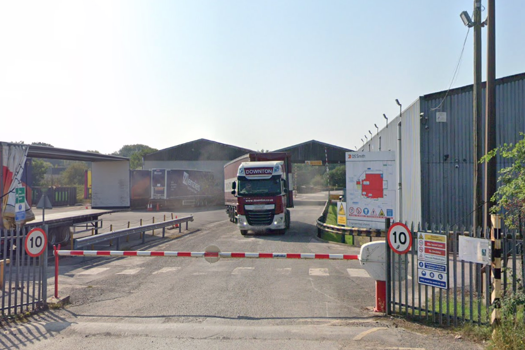The prices vary as much as designers themselves do, reflecting their different priorities, from professional graphic designers who want to work quickly and to offer the widest range of visual effects to their clients, through to business users creating corporate reports or home users making flyers or business cards.
Besides price, there are a number of other factors to consider, such as productivity – are the common tools easily to hand or do you have to waste time diving into menus – and will the software apply effects immediately or do you have to wait around while it processes your work?
It goes without saying that any professional program should support both CMYK and RGB output as well as Pantone libraries and ICC profiles, plus HTML5 if you need web output.
There are a number of other features that you should look for, such as the ability to undo any changes that you make to your files, as well as real-time previews so that you can see effects as you apply them. Another factor to consider is how widely used any given software and particularly its file format is so that you can be sure that everyone can open the files. This also applies to training as it’s easier to find skilled operators for commonly used programs.
Perhaps the most divisive issue in recent years has been over licensing. Many vendors have moved to a subscription model while others still charge a single fee. The main advantage of a subscription charge is that you always have the latest version with all of its features but this also means that you have to keep your computing hardware reasonably up to date or you’ll struggle to run the more demanding programs. It can be argued that subscriptions allow users to budget a known amount each year though it’s just as easy to budget with perpetual licences as most developers try to update their software every 12-18 months. Furthermore, a perpetual licence gives you the option to update your software as and when it suits you and only if you think the new features justify the investment.
What’s available?
Adobe is without doubt the major player in terms of design software, with its Creative Cloud offerings covering everything from page layout, with InDesign, through to photo editing in Photoshop and drawing through Illustrator. They have an incredible breadth of features and the Cloud offers an extra dimension in collaborating across teams and storing work online. But not everybody likes Adobe’s subscription-only approach and this has undoubtedly stimulated a number of other developers.
Quark has taken the opposite to Adobe’s approach of including everything but the kitchen sink and instead created a lean and highly responsive program in QuarkXPress that is capable of a tremendous breadth of design features and is extremely quick and easy to use. The 2018 version was released earlier this year and includes a number of enhancements to the overall typography, making OpenType features, such as fractions and ligatures, easier to use, as well as support for colour fonts, such as Emojis. Quark has concentrated on giving users a granular level of control, at least down to paragraph level if not individual characters. Thus hyphenation levels can now be set down to the paragraph level with a choice of five degrees of strictness, such as to hyphenate everywhere it’s grammatically correct or only hyphenate compound words and this works across all languages that QuarkXPress supports. Quark has also added a new InDesign IDML Import feature that converts InDesign IDML documents directly into the QuarkXPress format. The full version costs £725 with upgrades starting from £159.
Corel has developed a large number of design programs, which it then bundles together in various suites, with the main offering being CorelDraw Graphics Suite. This includes CorelDraw, for vector illustration and page layout, plus PowerTrace, for bitmap-to-vector tracing and PhotoPaint, for image editing. It also comes with a huge selection of clipart, digital photos and fonts, as well as 2,000 vehicle templates that can be used for vehicle graphics, one of the reasons why it is so popular amongst wide format users.
Earlier this year Corel released a major update to the Graphics Suite. Thus CorelDraw gained a Symmetry drawing mode that enables users to create a range of symmetrical designs in real-time, as well as a new Add Perspective effect that can be used to quickly create the illusion of distance and depth by applying perspective to bitmaps, vector objects, or both directly in the drawing window.
Corel has also improved the overall productivity with customised curve previews, updated vector previews, redesigned fill and transparency pickers, and new Toggle snapping to speed up the overall pace. There’s a useful Project Timer tool to help users keep track of the amount of time spent on a project making it easier to invoice for the actual work done.
There are a number of new tools for photo editing, including the ability to straighten photos and to correct for perspective distortion interactively, which is useful for tidying up buildings that appear to be falling over if photographed from close-up. This costs £600 with upgrades from £300.
Serif has developed the Affinity range of graphics software, which includes Affinity Designer and Affinity Photo, each of which cost just £48.99 with no need for a subscription. Both of these are available for both Mac and Windows and there are also iPad versions. The company is working on a page layout program, Affinity Publish, due to start beta testing later this summer.
Affinity Designer is a straightforward illustration tool that supports CMYK and spot colours as well as web output. Designers can set up grids with multiple planes and have design elements snap to guidelines. It allows for non-destructive editing and a one-million-percent zoom.
Affinity Photo supports Photoshop’s PSD file format and can also edit Raw camera files. It has a number of useful features including focus stacking, which is extremely useful for macro product shots, as well as stitching for panoramas. Users can create masks and vector paths as well as adding effects on different layers. It offers various blur filters as well as a liquify effect to warp image elements.
The British company iStudio Software is responsible for iStudio Publisher, which only runs on Macs and costs just £18. It’s mainly aimed at home and small office users rather than professional design departments. But it should be adequate for producing newsletters, invitations and reports. It includes a number of templates and designers can set up master pages as well as working across a two-page spread. It allows text on a curve and can wrap text around shapes. It can also set up multi-page booklets complete with imposition, and supports RGB and CMYK colours.
Belight Software, based in Ukraine, is behind both Printworks and Swift Publisher, both only available in Mac versions. Printworks, which only costs $30 (or £22), is mainly meant for producing flyers, business cards and labels. It comes with over 2,000 clipart images and 500 templates for various projects such as tri-fold brochures and CD labels. It has a fairly basic toolset, including multiple layers, linear gradients and the ability to set text on a free form line. Swift Publisher, which costs $20 or £15, is even more basic though it will support the use of master pages and show two-page spreads complete with text that flows from one box to another.
Xara has created a number of design, photo editing and page layout programs. However, from the start of this year Xara has opted to focus on its online graphics offering, Xara Cloud, a Software as a Service platform aimed at business users. The basic Starter version is free and includes document and photo editing with some cloud storage. There’s a more advanced Premium version for £5.95 per month and a Team edition for £12.95 per user per month that includes brand asset management. However, these are mostly meant for designing business documents such as invoices, flyers and presentations.
Xara will continue to develop its desktop products, which are now available through Magix Software. Top of the range is Designer Pro X, which is reflected in its price of £199. It offers web design, photo editing and desktop publishing. It can flow text around objects and images and create effects like transparency. It includes vector drawing, with a reasonably comprehensive set of photo editing tools.
Conclusion
Ultimately the choice of design software depends on the degree of productivity that you need. The cheaper programs are cost-effective for those that only need basic features but anyone that has to turn around a lot of different projects quickly, such as a magazine designer, should be looking at one of the more expensive packages, for their ability to switch between tools quickly and to apply effects precisely and easily.
Sign design
In theory you could use any of the regular design programs to create display graphics and plenty of sign shops do just that. But there are also several programs aimed specifically at the wide-format market that also include a RIP and drivers for common printers.
The most popular of these is probably FlexiSign, which supports features such as white and metallic inks. The latest version allows for contour cut shape nesting and generates QR and data matrix codes for inventory labelling. It has drivers for most roll-fed wide format printers and can drive cutting plotters for vinyl lettering.
The main alternative is EasySign, developed by the Dutch company of the same name. It allows users to create and reuse templates, can set up masks around bitmaps and create variable data versions. It also supports output to a printer RIP. There are different versions including a Starter edition, which operates as a plug-in to Adobe Illustrator, Photoshop or CorelDraw adding vinyl cutting capability.










